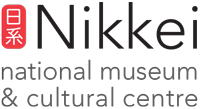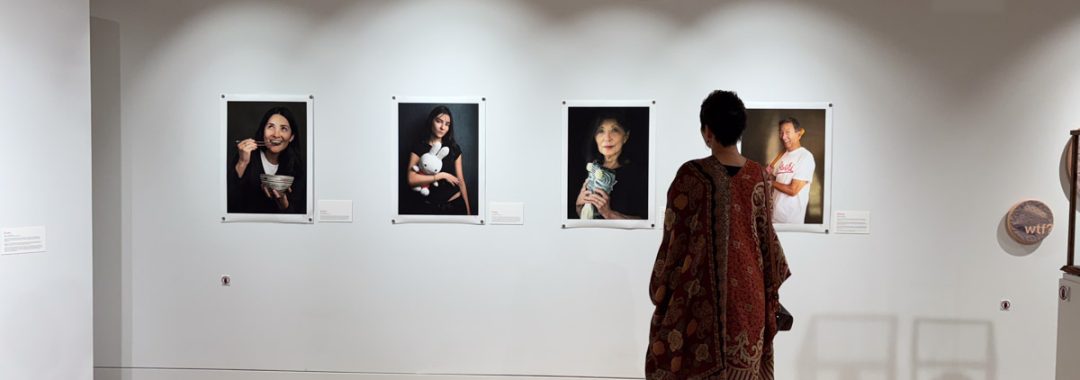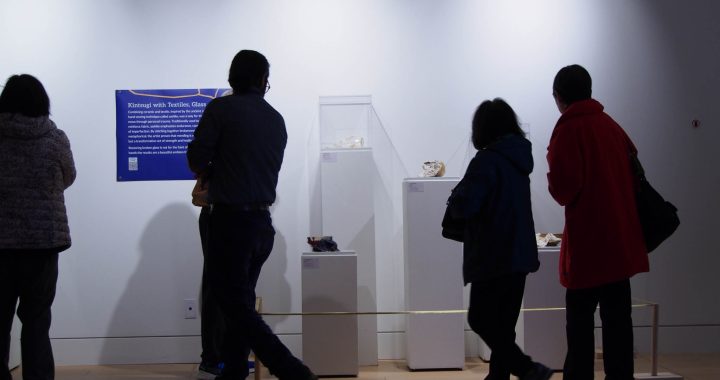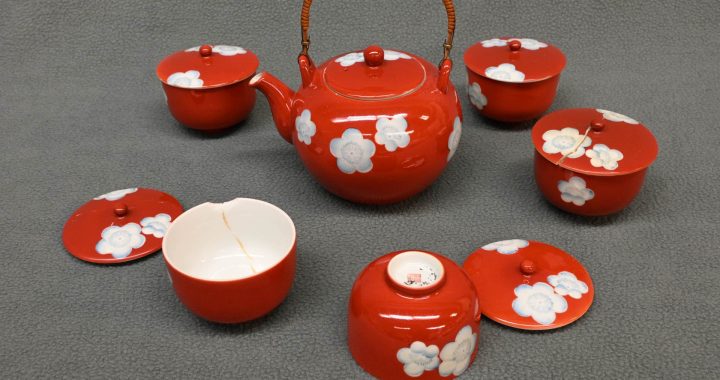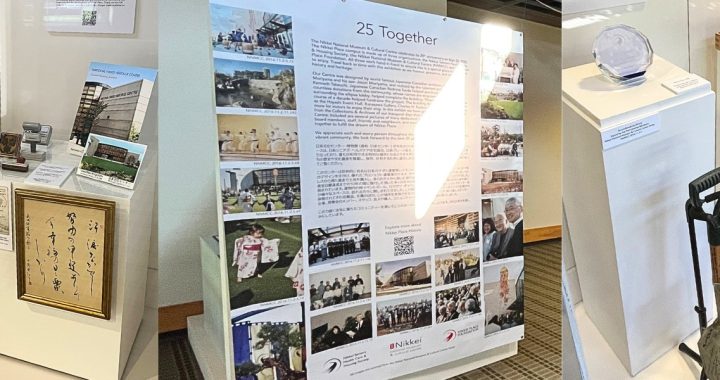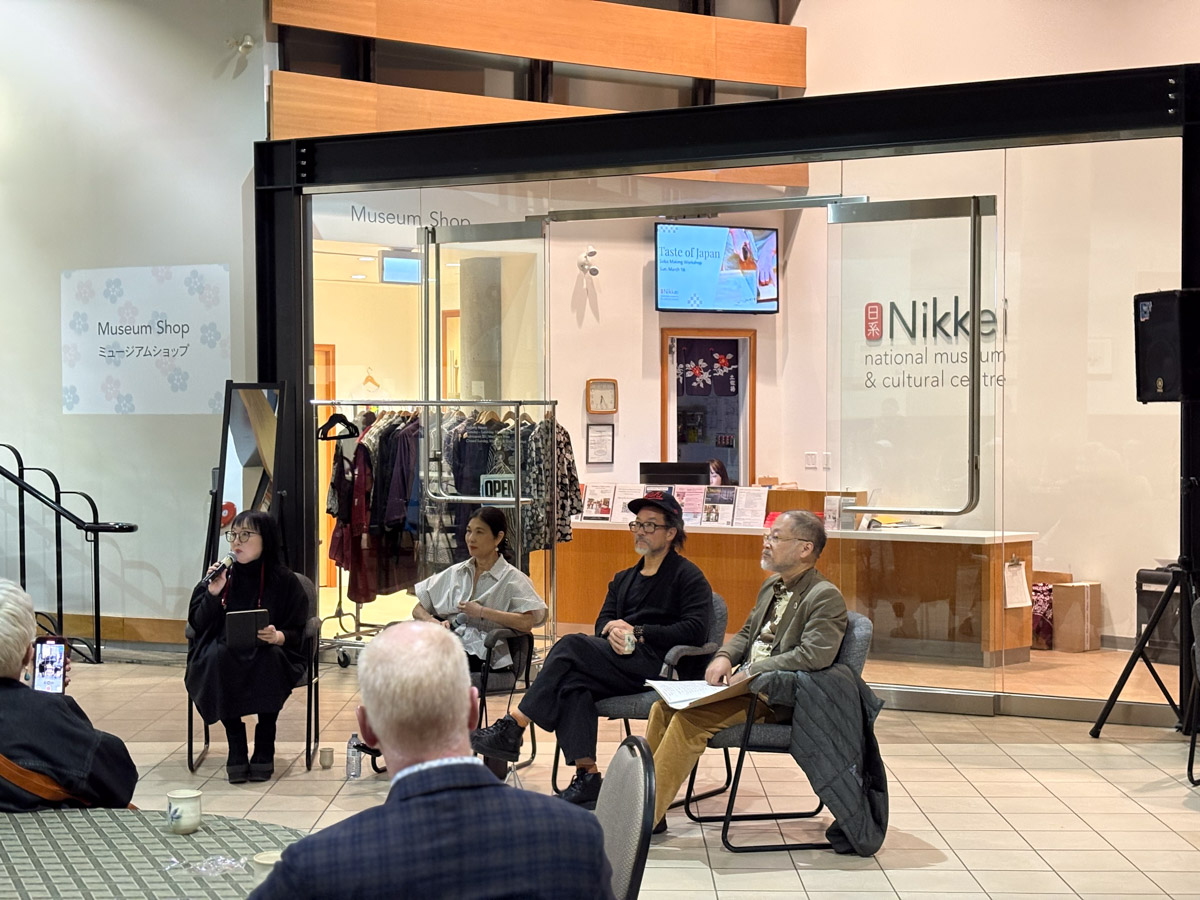
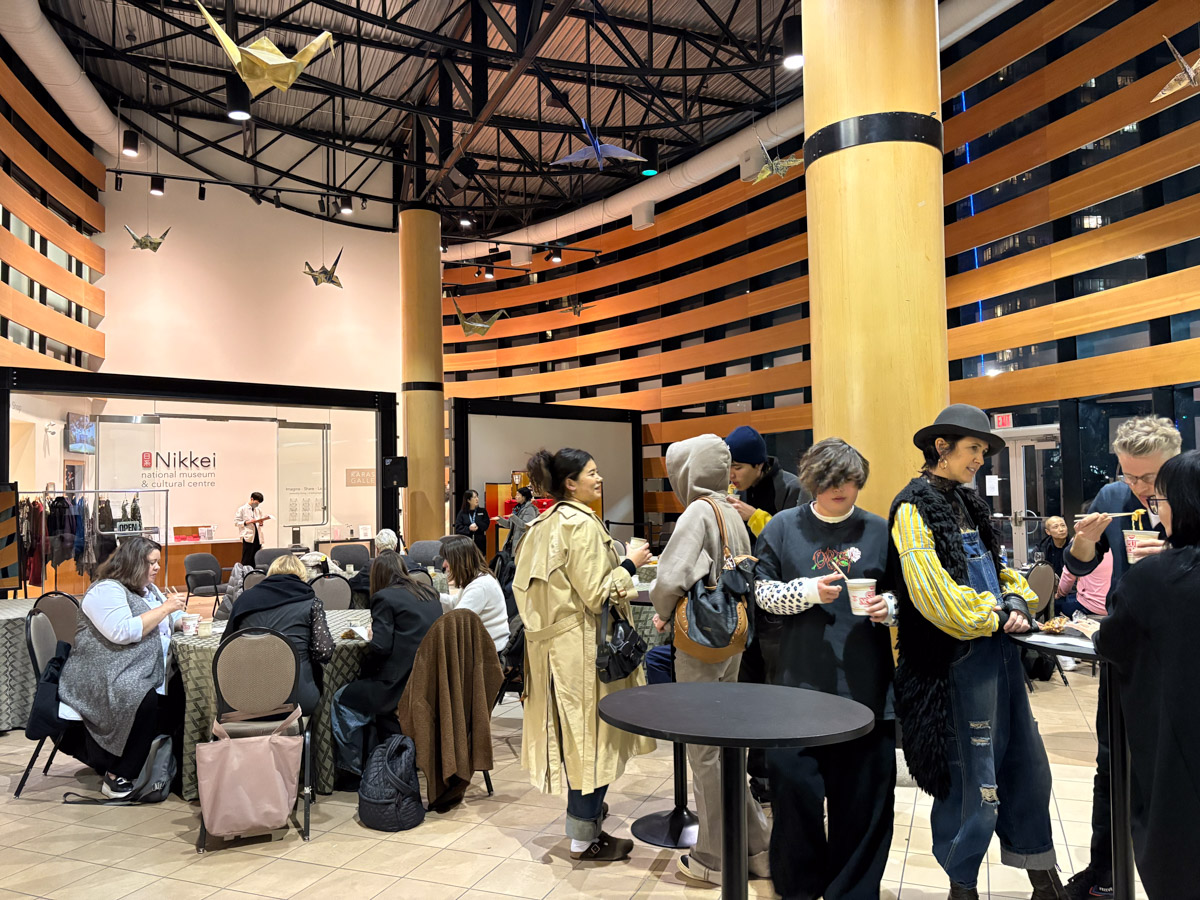
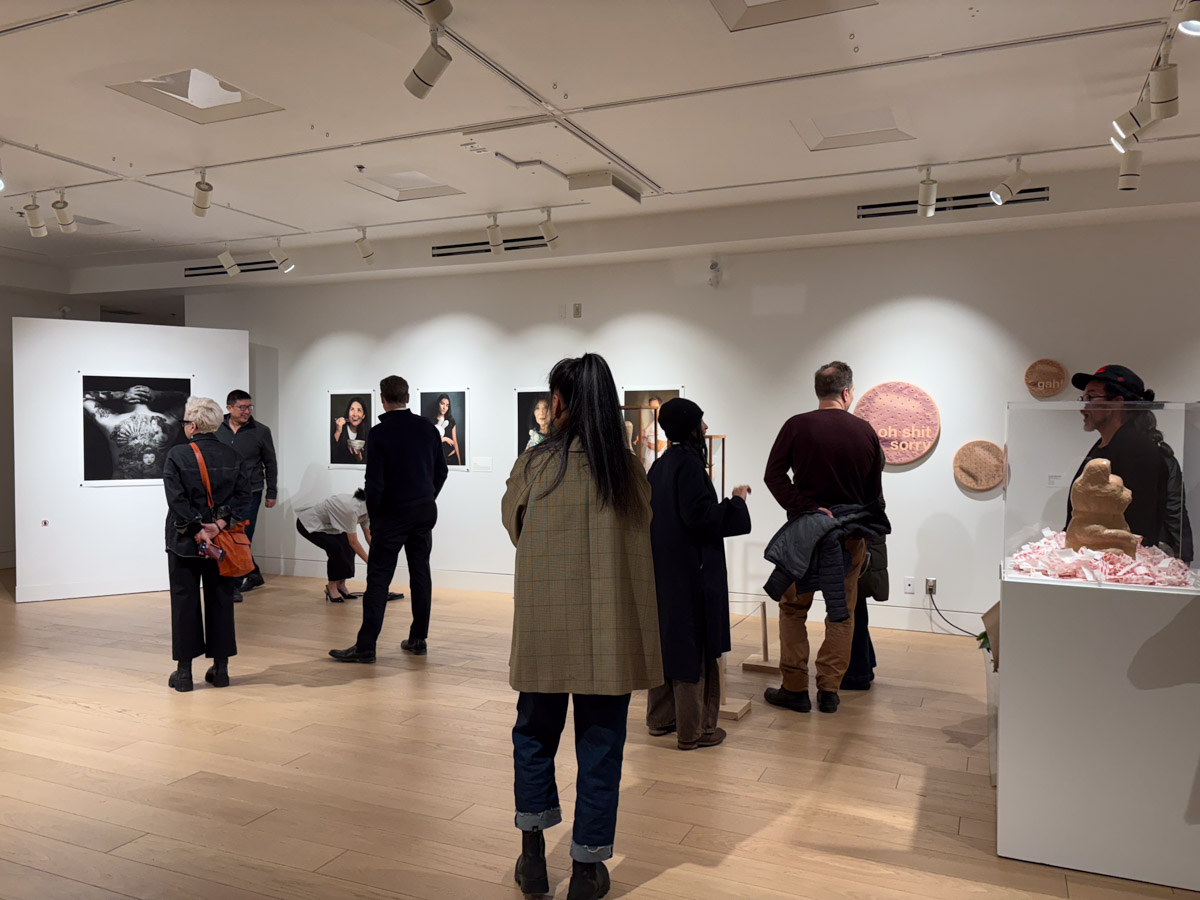
On February 13, 2025, attendees enjoyed a thought-provoking conversation between three of the exhibiting artists and curator Sherri Shinobu Kajiwara. Here are some highlights from their discussion. Please visit the gallery in person. Part 1 of the Umami: Savouring Artistic Nikkei Identity exhibit runs until May 17 in the Karasawa Gallery. Admission by donation.
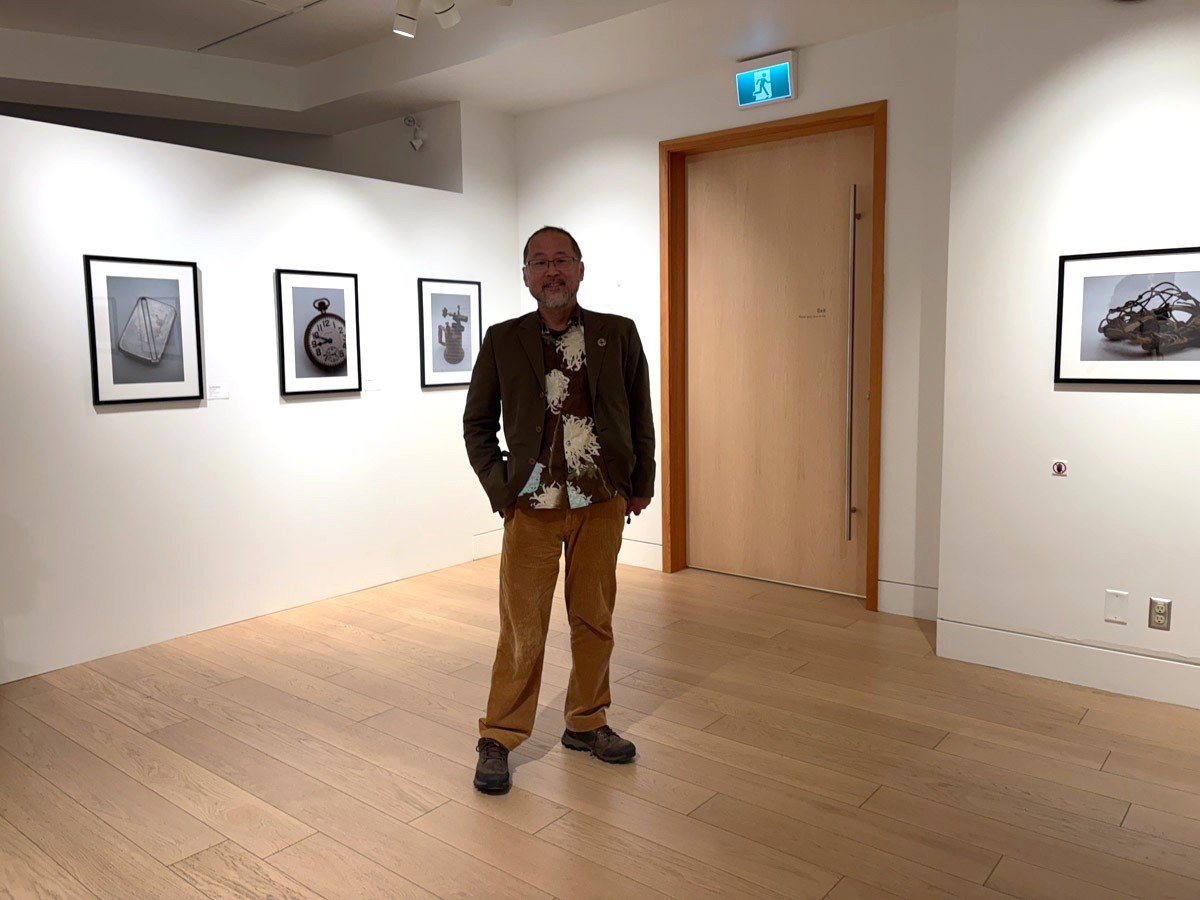
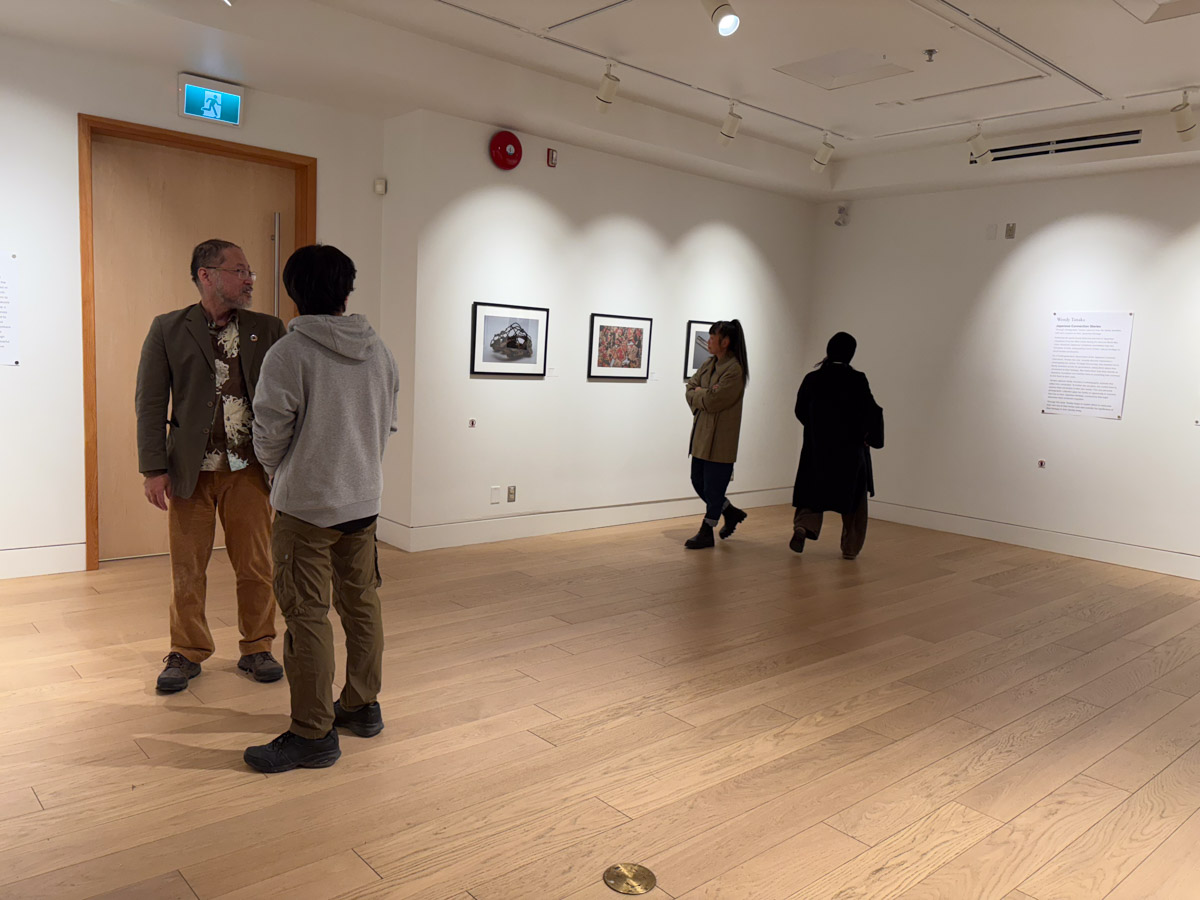
Ken Mizokoshi
In this project I photographed personal belongings which are part of the Nikkei National Museum collections, such as glasses, watches, or clothing. Why I photograph personal items: at first, when I see personal items which were taken good care of by their owners, I feel the individuality or personality of them, even if they are mass produced products. Talking about the “Remains” project, the items can convey tragedy that their owner experienced. And personal items make viewers feel tragedy more personal. I want the viewer to imagine each person’s life through their possessions.
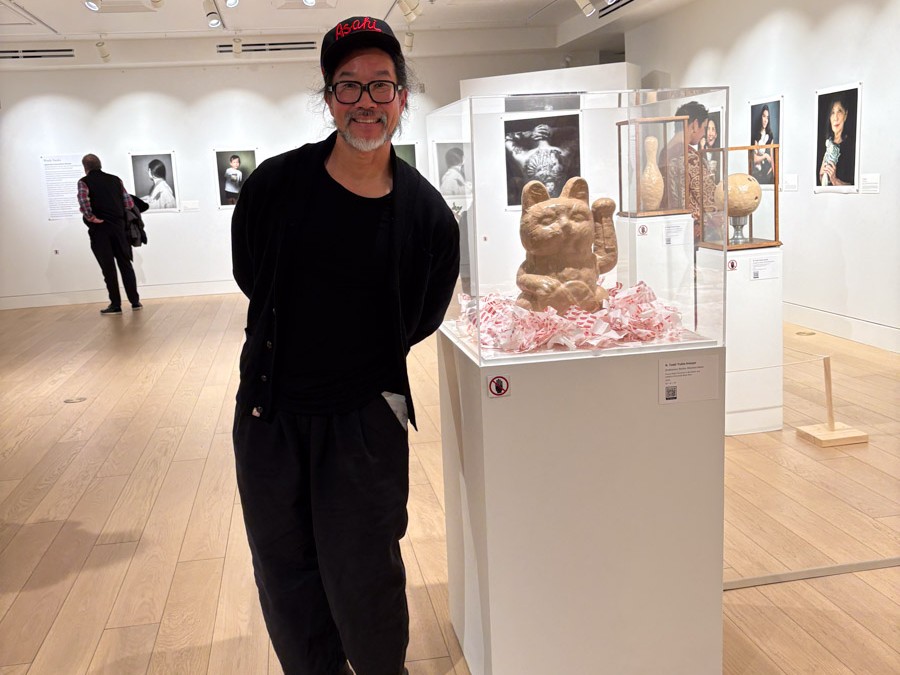
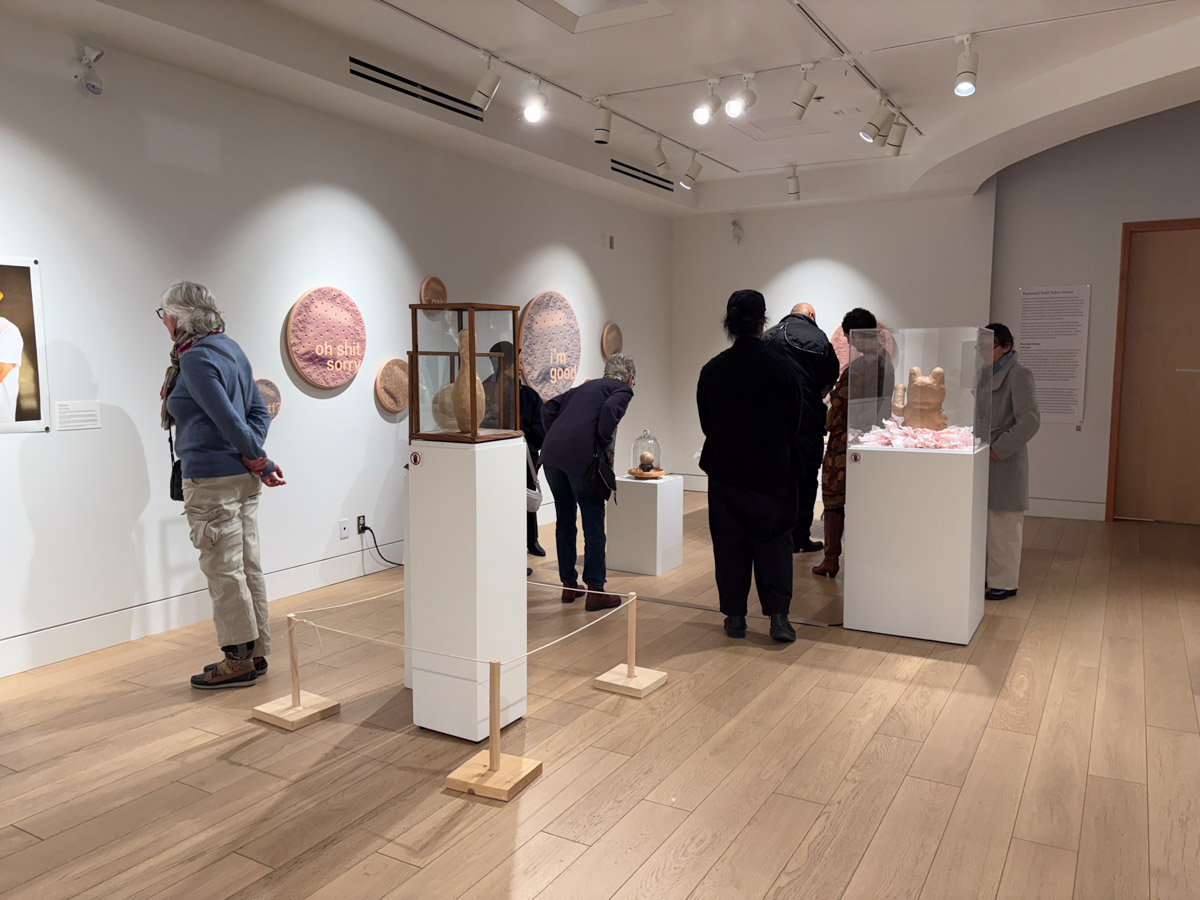
Raymond “Todd” Yukio Inouye
I’m not so interested in telling my own personal story as creating an initiating point for people to look and to reflect deeper. One of those things, especially as a designer is to consider what types of visual cues are universal in regards to trauma. This one particular I’m working on now is called “First Aid,” and it has to do with trauma and what is a universal icon of trauma. For me a band aid is it. It’s for healing, it’s for protection, it’s for a multitude of different things, but it has to do with covering up, repairing, renewing. And that’s part of what my work is about. Helping us understand a universal human condition. And it takes place in many forms.
When, for example, I took a band aid and I plastered it over an inanimate object, but each inanimate object has its history, and used in a specific way. So what kind of dialogue is initiated when – for example, the first one I came up with – it simply looks like a ball. It’s covered in band aids. But if you went to pick it up you can barely pick it up. Because it’s a cast iron shot put weighing three kilograms.
The idea with the bowling pin and bowling ball when I started working with them is a story of misogyny. Because bowling balls essentially is an icon of the masculine, perhaps toxic masculine, bowling over as many pins as possible.
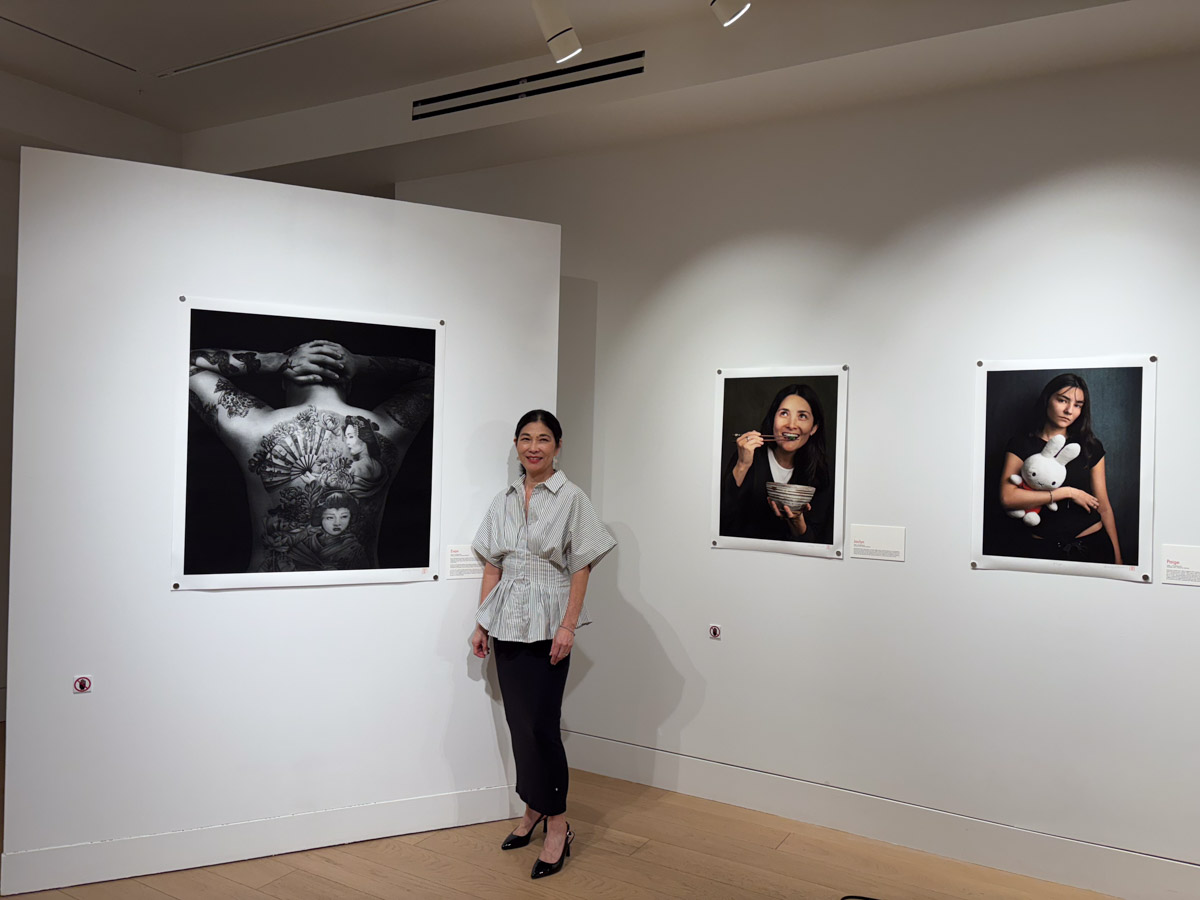
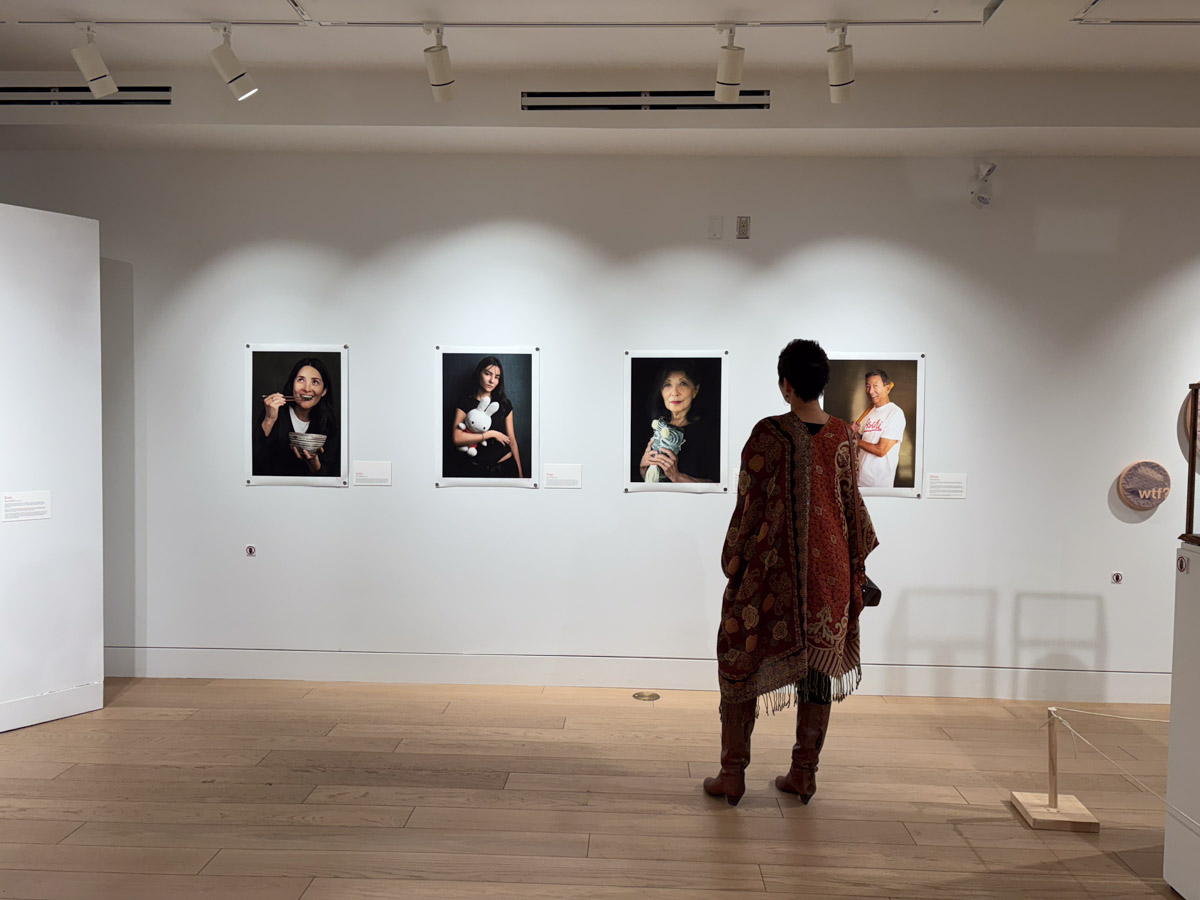
Wendy Tanaka
Recently I’ve become interested in my roots. Growing up I was not connected to the Japanese community at all. I was totally assimilated into Canadian culture. I am really honoured that the Nikkei community has given me the opportunity to exhibit my work here. It’s my first exhibit and it’s helped me connect with my roots.
In the spirit of the photo, I was able to bring my family back to their Canadian origins. They were all from Vancouver, they were all relocated to Montreal and to the east, and really haven’t been back. This is really nice and special. Over the years my family told few stories about Vancouver. They told a little about evacuation and internment, but spoke most of their life in Montreal after they relocated there. Families prefer to look forward rather than backwards.
A few years ago I read my cousin Shawn Tanaka’s Master’s thesis “Effects of Consequences of Displacement of Third Generation Japanese Canadians Post Evacuation.” I was really inspired by her paper. To think about what has happened to all descendants of Japanese Canadians of evacuation. And how they assimilated into Canadian culture, and how do they identify now.
I knew that I was not connected to my heritage. I wondered how other Japanese felt. I have six generations of Japanese Canadians in my family – so who better ask than my family. I began my journey of discovery by asking my family some questions. How much Japanese culture have you retained? How do you racially identify? How much does your physical appearance influence your identity? Is there something in particular that strongly connects to your heritage?
I thought it was really important to document my family’s feelings and thoughts as part of a family legacy project. As a photographer I thought I could best express my family’s emotional physical connections to their heritage by photographing them with objects that symbolize their bond. The word symbolize because they have no objects from the past. The objects they are holding are all new, but are connecting them to their heritage.
I chose to darken the background and play with light shadow to draw attention to the subjects focusing on an emotional journey with their heritage. And to deepen the narrative I asked my family members to write personal stories to accompany the photos. My exhibit called “Japanese Connection Stories” brings both a face and a voice to the intergenerational impact of the evacuation of Japanese Canadians. I believe personal stories make the events of the evacuation more relatable to the broader community. Showing that it’s not just a chapter in history but a living part of who we are today…. My wish is to inspire you to think what’s my connections to my heritage.
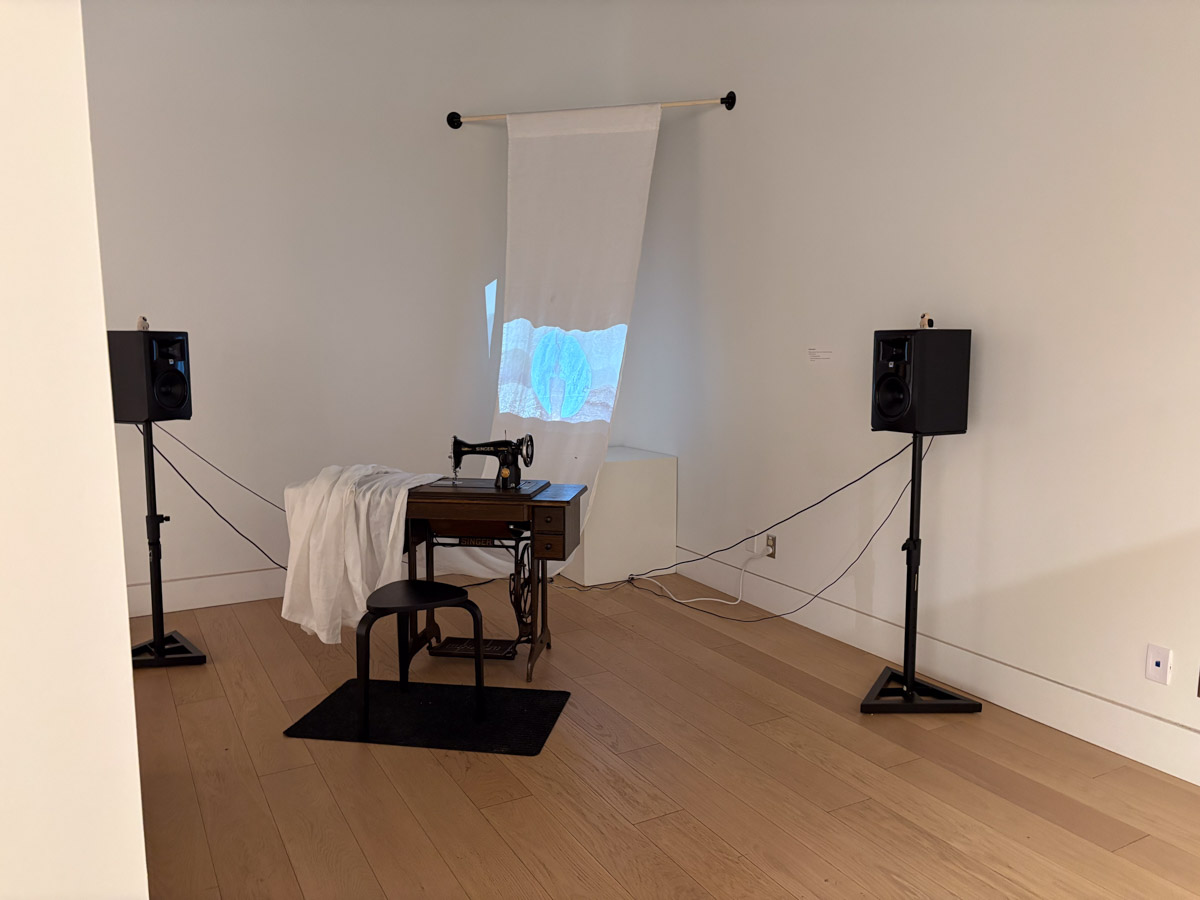
While artists Annie Sumie and Brian Kobayakawa were unable to attend, curator Sherri Shinobu Kajiwara introduced their conceptual Kintsugi installation. This interactive artwork incorporates a sewing machine that belonged to Brian’s grandmother, a poignant object that journeyed with her during internment and forced relocation. The artists also drew inspiration from Landscapes of Injustice documents detailing their grandparents’ experiences, weaving these stories into original music and lyrics. Visitors are invited to pedal the treadle and experience the piece firsthand.
